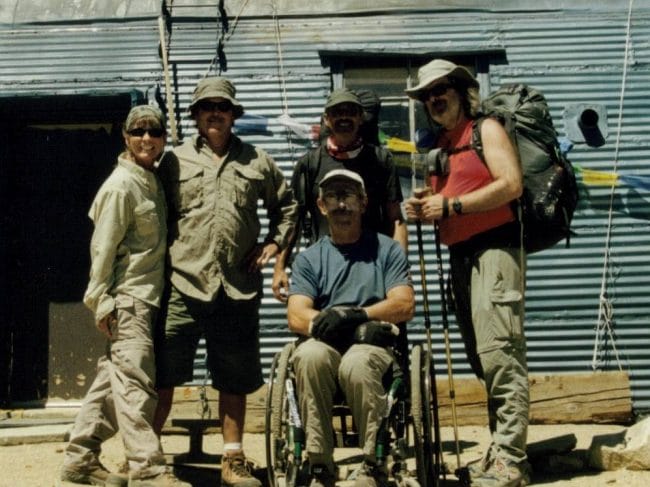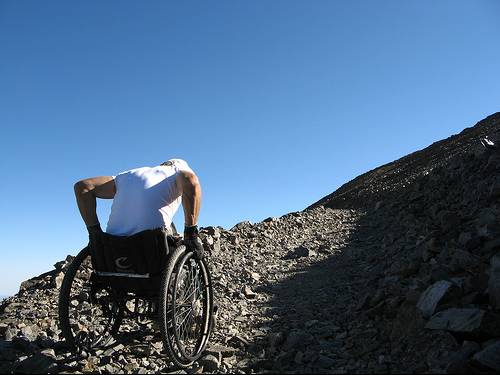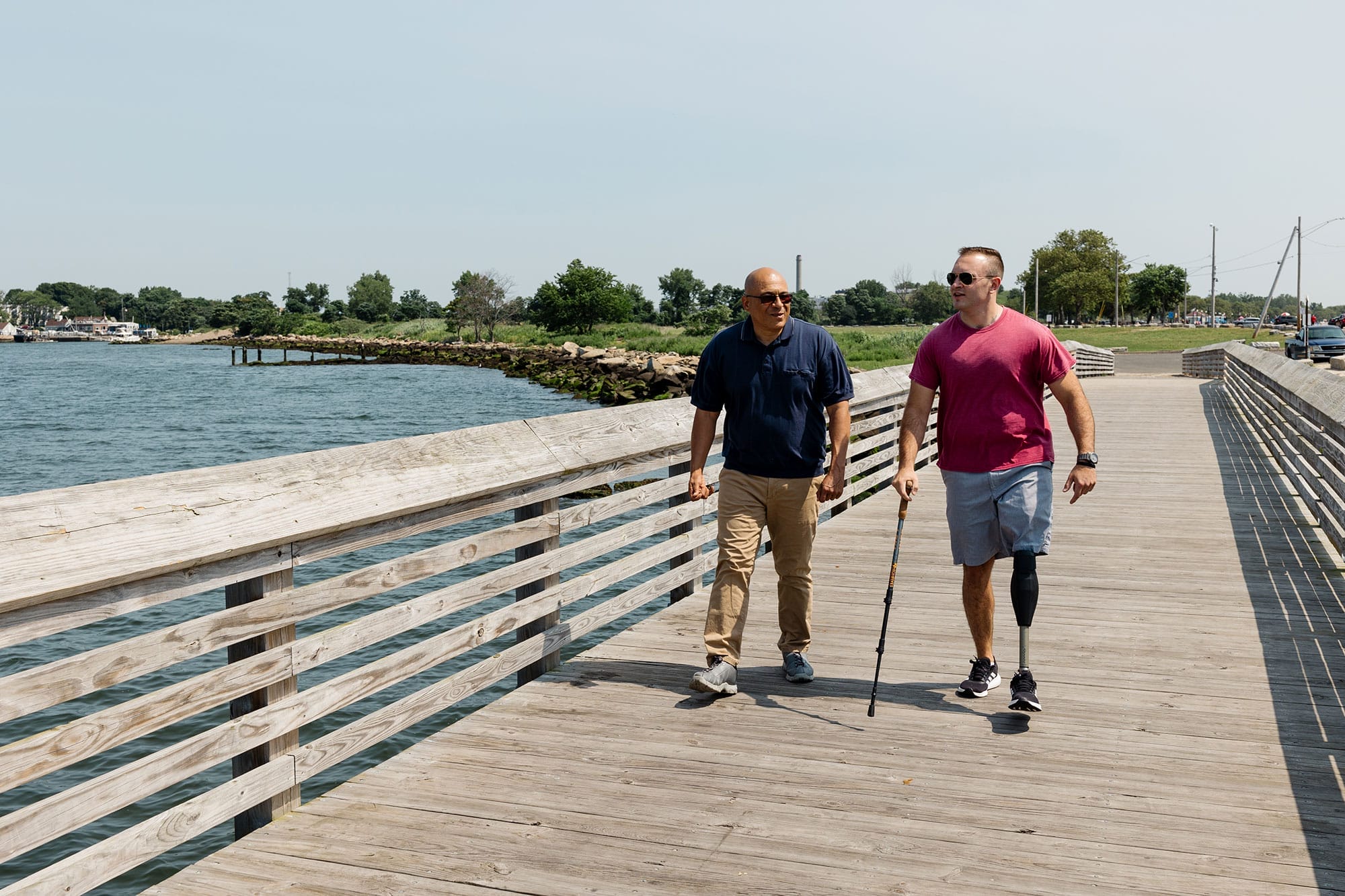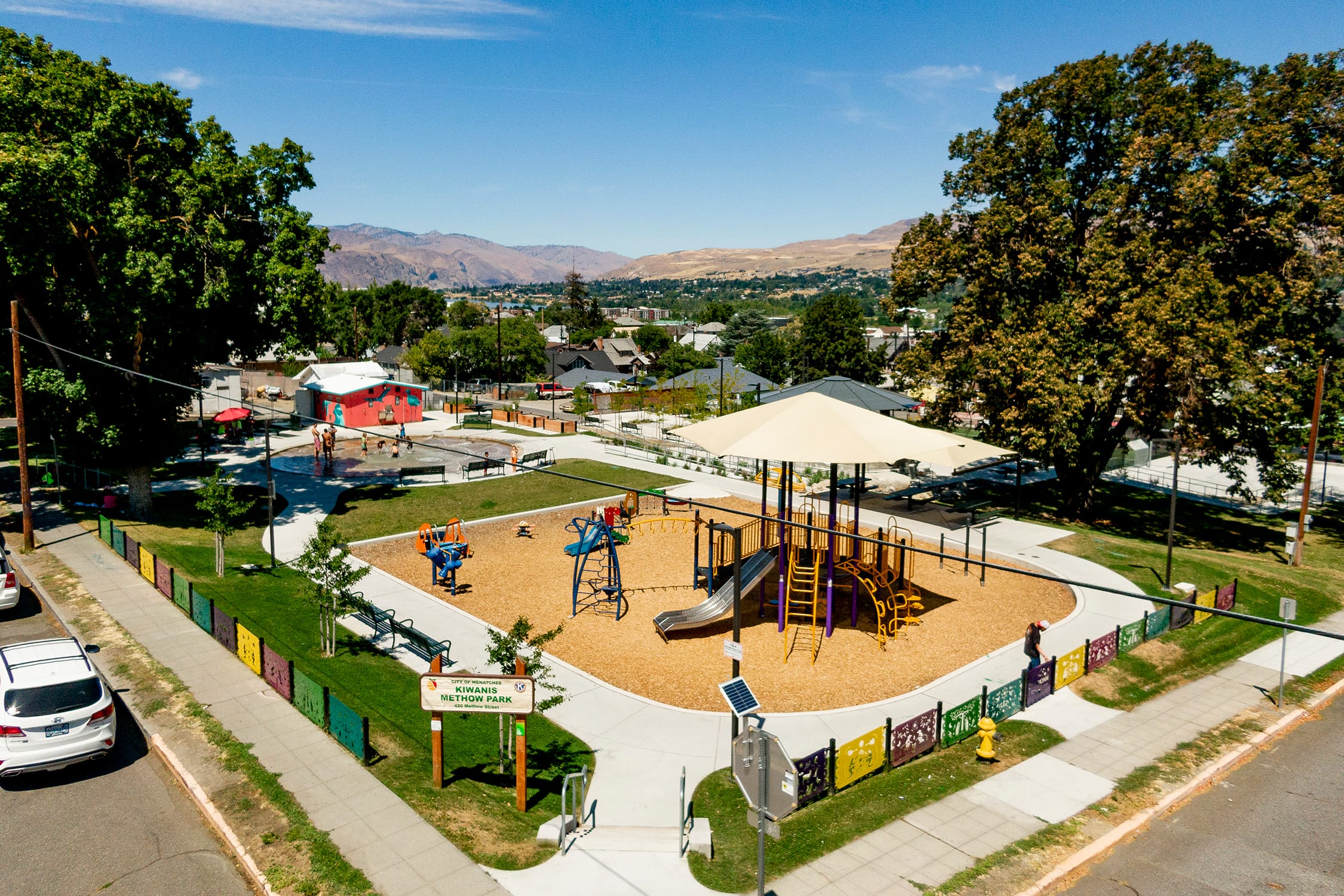
Whatever the trail throws at him, “4-Wheel Bob” pushes through
Whatever the trail throws at him, “4-Wheel Bob” pushes through
To reach Kearsarge Pass in the southern Sierra Nevada, you’ll need to ascend 2,600 feet in 11 miles, over big boulders and through loose scree. Some of the highest peaks in the country loom overhead, and the stunted trees that cling to the mountainsides offer little protection from the high-altitude sun.
It’s tough going for any hiker. But for Bob Coomber, who’s tackling the trail in his wheelchair, it’s a challenge on another level.
Progress comes in inches, as he tilts, leans, swivels, and pulls himself over high rock steps and through chilly streams flowing across the trail. On a route like Kearsarge Pass, a full day’s hiking might move Coomber a quarter-mile closer to his destination. “Mileage is great if you’re into mileage,” he shrugs. “I’m not out for mileage.”
Instead, Coomber’s aiming to be the first person to cross the Sierra Crest in a wheelchair. On his two previous attempts, he’s been turned back by rockfall, bad weather, and a malfunction in his insulin delivery device that left him in intensive care for five days. He’s training for a third attempt in September.
 Coomber and his hiking buddies on their trek to 14,246-foot White Mountain–the third-highest summit in California.Photo credit: Cheryl Norlin
Coomber and his hiking buddies on their trek to 14,246-foot White Mountain–the third-highest summit in California.Photo credit: Cheryl Norlin
“I’ve got pretty good balance, and the ability to prop myself up with my legs if I need to,” says Coomber. Often he’ll lift himself, or his chair, or even a rock in a trail, to clear a path forward. “Whatever needs to be done, quite honestly—I have to have that mindset: whatever you’ve got to do to make it happen.”
Coomber grew up an active, athletic kid who enjoyed family backpacking trips and exploring the natural world. So when complications from Type 1 diabetes forced him into a wheelchair in his 30s, he was terrified he’d lose access to the outdoors.
But Coomber soon began to test his limits. “I started going a little further around the lake near my house each day,” he says. “And then I saw this hill, and so I started to see how far up the hill I could get. I’d come back day after day, and go a little further up the hill each time. The day I got to the top, that was a monster moment.”
The hill at the park was just the beginning. Over time, Coomber built strength, endurance, and technique. Proof of his persistence (“My wife has a different word for it,” he quips) is in his impressive list of wheelchair first ascents, including 14,246-foot White Mountain—California’s third-highest peak. Known around his Livermore, California, home as “4-Wheel Bob”—a nickname he gave himself as word of his accomplishments began to spread—he’s a volunteer trail guide for his local park district and also serves on the city council.
 “Mileage is great if you’re into mileage,” says Coomber of his motivations for hitting the trail. “I’m not out for mileage.”Photo credit: White Mountain Research Center
“Mileage is great if you’re into mileage,” says Coomber of his motivations for hitting the trail. “I’m not out for mileage.”Photo credit: White Mountain Research Center
As a councilmember, Coomber advocates for investment in parks and trails. In his view, a great trail system is about both variety and quality. “It’s important to have paved, ADA accessible trails, and it’s especially important to maintain them well so they’re welcoming to people who aren’t able to leave pavement,” he says. “I also think it’s important that we leave some places unpaved, for those people who want to get out there.”
For Coomber, getting “out there” means making demands of his body that most hikers will never know. But his motivation to push through will sound familiar to anyone who wants to venture beyond the pavement. “The view is better. The company is better on trail, even when you’re alone. Everything in nature is a curiosity. You can learn so much just by getting out and listening: unplug everything—turn off your phone, take off your earbuds. I recommend it to anybody,” he says.
The Active Transportation Infrastructure Investment Program (ATTIIP) is a vital initiative that helps expand trails connecting people to nature and their broader neighborhoods. Despite this importance, Congress allocated $0 for ATTIIP in this year’s appropriations process. We cannot delay investments in safe, active transportation systems. Urge Congress to fully fund the ATTIIP!


Donate to become a member, and you’ll receive a subscription to Land&People magazine, our biannual publication featuring exclusive, inspiring stories about our work connecting everyone to the outdoors.
See how our supporters are helping us connect people to the outdoors across the country.











